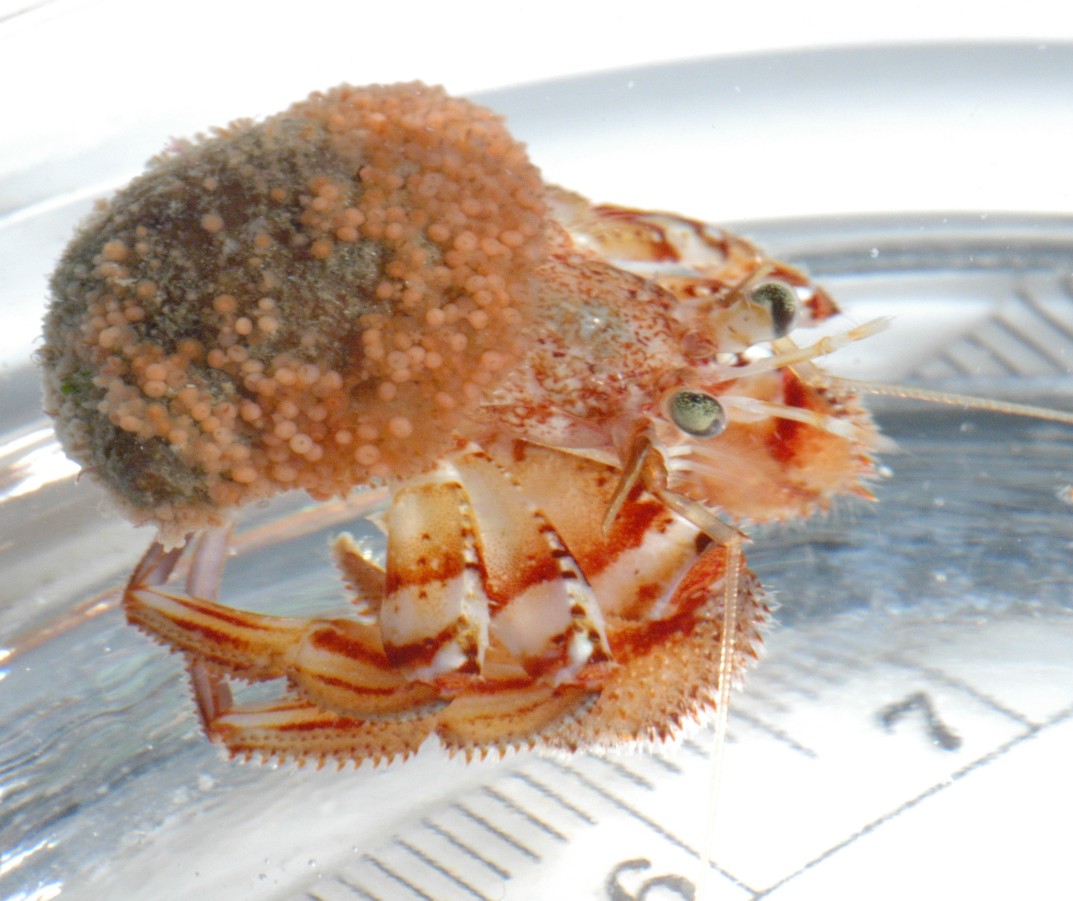Pagurus dalli (Benedict, 1892)Common name(s): Whiteknee hermit |
|
| Synonyms: Eupagurus dalli | |
|
Phylum Arthropoda
Subphylum Crustacea
Class Malacostraca
Subclass Eumalacostraca
Superorder Eucarida
Order Decapoda
Suborder Pleocyemata
Superfamily Paguroidea
|
|
| Pagurus dalli, from about 20 m depth at Mukilteo. The "shell" on its back is composed mostly of a colony of Hydractinia milleri hydroids. | |
| (Photo by: Dave Cowles) | |
How to Distinguish from Similar Species: Pagurus stevensae has a right cheliped more triangular than elongate and a double row of spines on the eminence near the midline of the dorsal surface of the propodus of the left chela, plus it has no white band on the end of the merus of its chelipeds. Pagurus kennerlyi has a white band on the merus of the chelae but its second antennae have alternating light and dark bands and it has a tuft of setae on the dorsal side of the base of its cornea.
Geographical Range: Bering Sea to Oregon; widespread but not abundant.
Depth Range: Very low intertidal to 276 m
Habitat: Gravel, sandy, or mud bottoms; symbiotic with sponges (or hydroids)
Biology/Natural History: This species is said to generally live symbiotically with the sponge Suberites latus or Suberites ficus, which dissolves and overgrows its shell. This specimen was in a "house" made largely or entirely of the hydroid Hydractinia milleri. This hydroid is said to encrust shells which have hermit crabs living in them, and eventually to overgrow the shell as the crab grows. The hermit crab frequently rubs the flagellae of its second antennae over the hydroid colony. In another Hydractinia-hermit crab symbiosis this behavior was found to result in the hermit crab gathering and eating some of the plankton the Hydractinia had captured.
The presence of Hydractinia
on a hermit crab seems to at least partially deter predation by
octopus.
Octopus usually readily capture hermit crabs and other
crustaceans.
However, an octopus clearly thinks twice about attacking a hermit crab
with Hydractinia
on its shell.
Click
here for a movie showing how octopus deal with Hydractinia-covered
hermit crabs.
| Return to: | |||
| Main Page | Alphabetic Index | Systematic Index | Glossary |
References:
Dichotomous Keys:Coffin, 1952
Flora and Fairbanks, 1966
Kozloff 1987, 1996
General References:
Hart,
1982
Ricketts
et al., 1985
Scientific Articles:
Web sites:
General Notes and
Observations: Locations,
abundances, unusual behaviors:
I have rarely encountered and identified this
species. I can find
no references in the literature to its living symbiotically with a
hydroid
(though it lives in a similar manner with sponges). My thanks
to
Kirt Onthank for his sharp-eyed viewing during a dive which resulted in
finding this symbiotic pair.
In this side view the slight coiling of the "house" is seen. The house is made of the hydroid Hydractinia milleri. The egglike structures are gonozooids of the hydroid. The hermit crab gives no sign of being stung by the hydroid. Some other species of hermit crabs, known to be symbiotic with Hydractinia, also do not seem to be vulnerable to their sting while some other hermit crab species are.
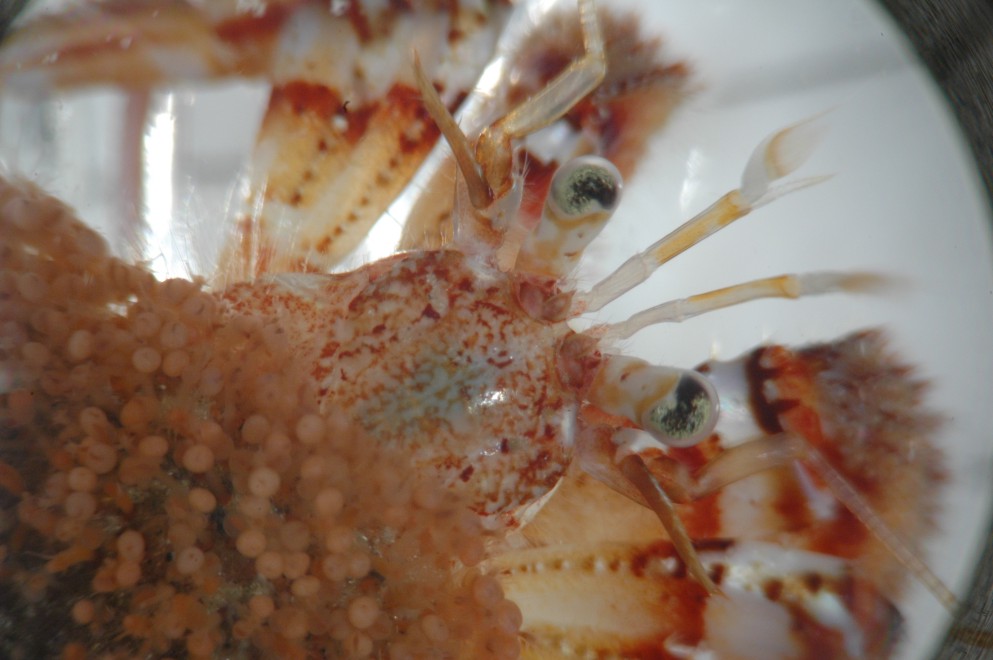
This dorsal view of the head shows the smooth carapace,
the lack of tufts (setae) on the dorsal margin of the cornea,
and the fully exposed eyescales
with a single terminal spine and no median dorsal furrow.
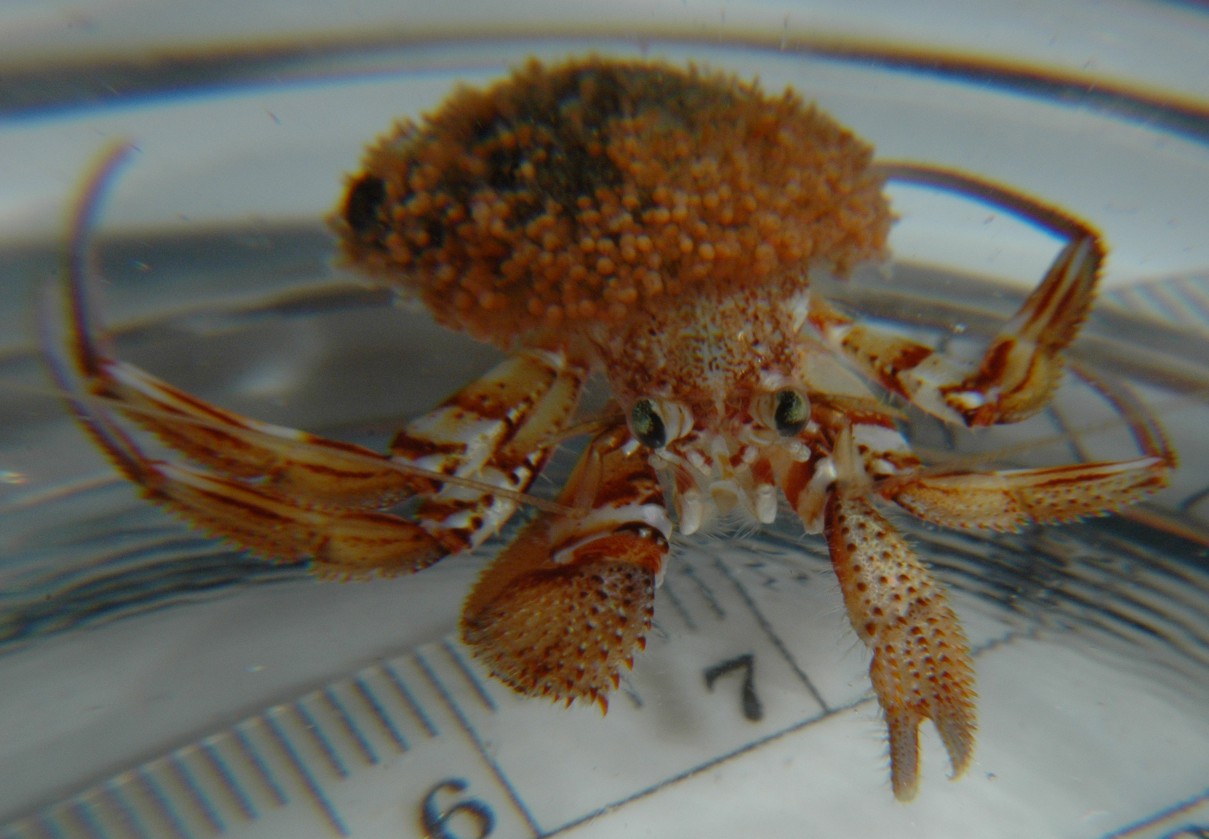
The carpus
of the left chela
is longer than the merus.
The carpus
of the right chela
is about 1 1/2 times as long as wide and is not extremely flattened
(the
carpus
is the last segment visible on the right chela
here, as the propodus
and dactyl
are folded underneath as the animal crawls along). The merus
of both chelae
has a prominent white band on the terminal end.
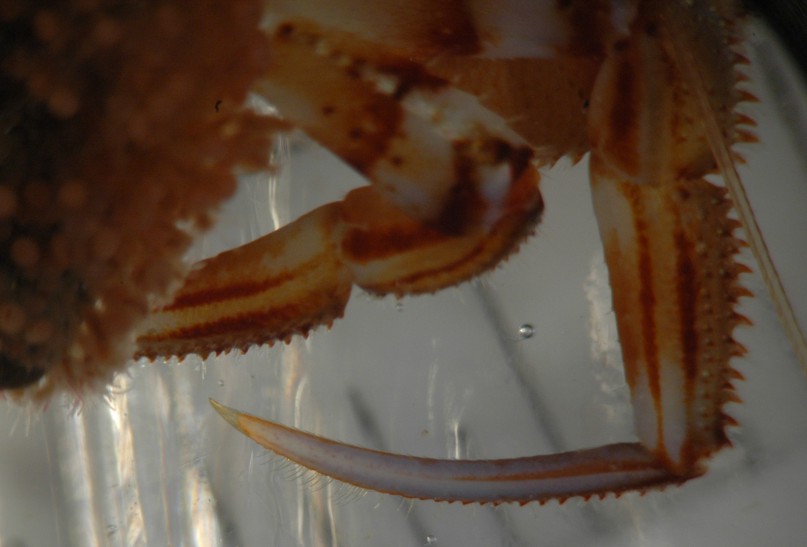
The 2nd and 3rd dactyls
are not striped, do not have ventral spines, and are not obviously
twisted
in relation to the propodus.
This is a view of the merus
(top right, spiny), carpus (spiny), propodus,
and dactyl
of the right second leg.

This ventral view of the right cheliped
shows that the ventral side of the merus
(to the left of the sharp turn, or "knee") does not have any prominent
tubercles.
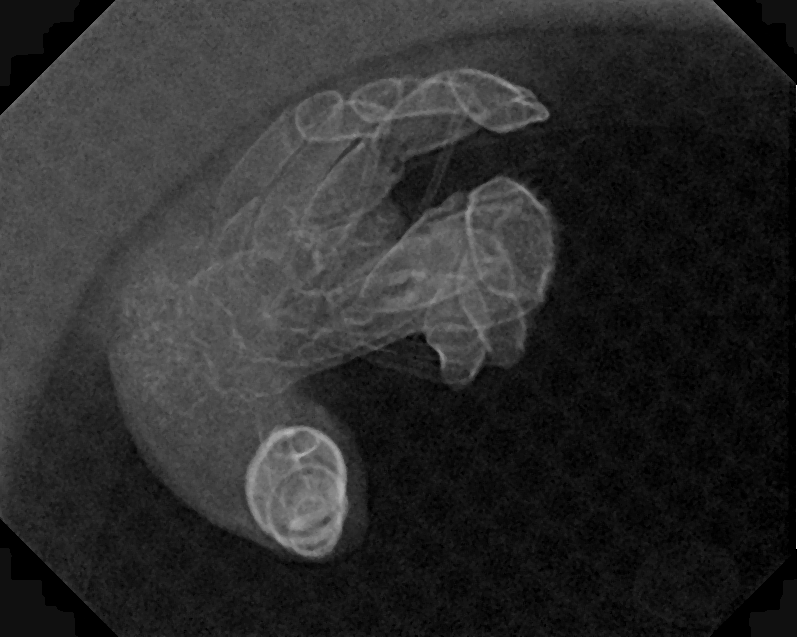
This X-ray view of the above live animal shows that there is a small
gastropod shell at the base of the Hydractinia
house. The shell is about 5 mm long.
Digital X-ray compliments of Julie Kellogg, DDS and Tietan Dental
Clinic.
Authors and Editors of Page:
Dave Cowles (2007): Created original page
CSS coding for page developed by Jonathan Cowles (2007)
